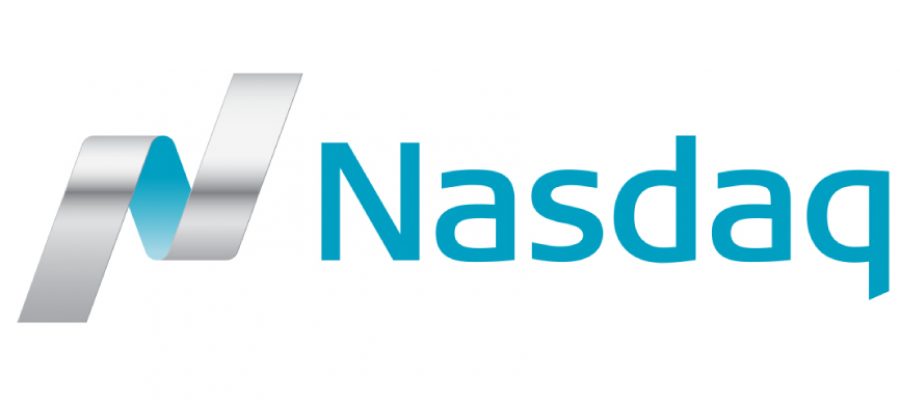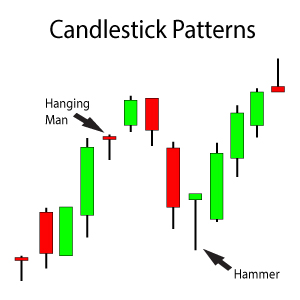This article is a NASDAQ Composite breakout update. The breakout from the NASDAQ’s 15 Year Cup With Handle chart pattern continues toward the price objectives I established back in this article “2/11/2017 – NASDAQ Composite (COMP) 15 Year Cup With Handle Chart Pattern“. In that article, I mentioned that
There are Fibonacci Extension Tools that start to converge around the 7,000 price area. Very interesting.
I had an update on the NASDAQ in April 2017 also. In that update I mentioned that it was still ok to buy the dips. But with some added market volatility recently, I feel its time for another update on the index and its progress towards my longer-term price targets.
NASDAQ Composite Breakout Update
This NASDAQ Composite Breakout Update is going to begin with a long-term chart. The long-term chart is a 20 year monthly candlestick chart to measure the progress of its breakout. This is the same chart I used in the February 2017 article linked above.
The index has achieved great progress towards my initial price target of 7,000. Also, in the April 2017 article linked above, I discussed the possibility of a 8,000 estimated price target. The 161.8% Target Line from the black Fibonacci Extension Tool seems like a reasonable target from a breakout of a 15 year Cup With Handle chart pattern, doesn’t it?

Analyzing Upside Long-Term Price Targets Using Several Different Fibonacci Extension Tools Looking for Confluence Areas
So while the index is still in the process of its breakout, it has definitely become a little more volatile over the last couple of weeks. Greater volatility, after an extended breakout, could indicate that the uptrend is ready to correct or consolidate for a period of time.
The MACD Histogram is showing that the buying momentum has been slowing down. That could be another indicator that the uptrend is near a top for now. However, I usually do not get too worried until I see at least[s2If !current_user_can(access_s2member_level1)]……
If you want to continue reading this NASDAQ Composite breakout update, you must first login.
I review the progress towards the approximate 7,000 target price I previously calculated for the NASDAQ. I look at additional possibilities for upside price targets and also review support areas below the index’s current price level.
If you are not a Trendy Stock Charts member, consider joining today! There are several different subscription plans available.[/s2If][s2If current_user_can(access_s2member_level1)] 2 consecutive slow-downs with the MACD Histogram indicator. Especially when looking at a longer-term trend like we are for the index.
Enough with the longer-term trend now. Let’s review some shorter-term charts and see what sort of activity they are hinting towards.
NASDAQ Composite – Moving Averages
Normally on an uptrend, a company’s share price uses the 20 Day moving average as support. Once that support is broken, a correction or consolidation period could be developing. Let’s take a look at a 1 year daily candlestick chart with moving averages for the NASDAQ.
The NASDAQ Composite is on the wrong side of the 20 Day moving average. It is fighting to try and stay above the 50 Day moving average.
Continued market weakness and look for a pullback to the 200 Day moving average around the 5,900 – 6,000 price area.
NASDAQ Composite – 5 Year Weekly
The last chart for this NASDAQ Composite breakout update is a 5 year weekly candlestick chart. This chart and its single Fibonacci Extension Tool indicate that 6,500 could be a near-term consolidation area for the rally.

Analyzing 4 Rising Window Candlestick Patterns With “Open Windows” That Have Not Been “Closed” (Gap-Ups That Have Not Yet Been Closed)
The current uptrend that began back in February 2016 has 4 open Rising Window candlestick patterns. I would anticipate the highest one could close during any extended pullback over the next couple of weeks. However, any pullback that bounces from the 5,950 area on above average buying volume is the indicator to repurchase sold shares and get long again.
If the 5,950 area does not hold because of a lengthy market correction, I anticipate the current pullback to go no lower than the 5,750 area. Look for confirmation from the MACD Histogram if a bounce from either the 5,750 or 5,950 support areas starts to develop.
Any drop below the 5,750 area could be trouble for the long-term trend. Let’s hope the NASDAQ Finds support at 5,750 or even preferably around the 5,950 price level.
NASDAQ Composite Breakout Update Summary
While I think there is more potential for one of the longest bull runs in market history, increased volatility usually means some profit taking. Monitoring the amount of profit taking in your stock holdings becomes important at this point. Too much selling and the company and possibly the overall market can enter into a little longer correction period.
Start by analyzing your stock’s monthly candlesticks at the end of August. That is a little over a week away from now. Start watching your charts for bearish candlestick patterns. Continue monitoring your stock’s buying or selling momentum using the MACD Histogram indicator on a weekly candlestick chart. The weekly chart for the NASDAQ Composite shows increasing selling momentum. If this does not start to show a decrease in selling momentum in the next week or two, then the probability of an extended correction increases significantly at that point. These could be some of the early indicators of a lengthier correction.
The quality of your stock holdings also matter when entering a possible correction or consolidation period. I would much rather be holding JP Morgan Chase (JPM) shares in a market correction than say shares of Tesla (TSLA). In any sort of market consolidation period, you want to be holding onto quality companies that have higher price projections still. Sitting through any correction or consolidation period requires you to also raise some cash. Or possibly re-allocate some profits into counter-trades such as gold. That is my thought process on entering market corrections.
With that being said, I think the NASDAQ Composite should find support around the 5,750 area on any extended pullback over the next couple of weeks. This is still a purchasable dip in my opinion. After finding support and rebounding, the 6,500 area is the next possible short-term stopping point on the continued breakout.
Monitor the MACD Histogram in early September. Does it reflect a continued decrease in selling momentum? If so, that could be another indicator of an extended market correction. If the market drifts higher with decreasing buying momentum, then that is a bearish divergence and another sell signal.
During any market rebound, once the 6,500 area is reached, some of the stocks that were making new highs could see their uptrends in jeopardy. The 6,500 area could be a lengthier consolidation period. For now, buy the 5,950 dip. A 5,750 dip would involve breaking below the 200 Day moving average. That is not something I anticipate happening at this stage of the rally. Not yet. So maybe the 5,950 area is the more likely reversal area, but do not be fooled by a continued push down to the 5,750 price level.
If you are uncertain of some price targets for some of your holdings, drop me a request in the Idea Chamber. If you prefer you can also send me an email.
Good luck trading!
[/s2If]















Ask a Question. Make a Comment. Leave a Reply.